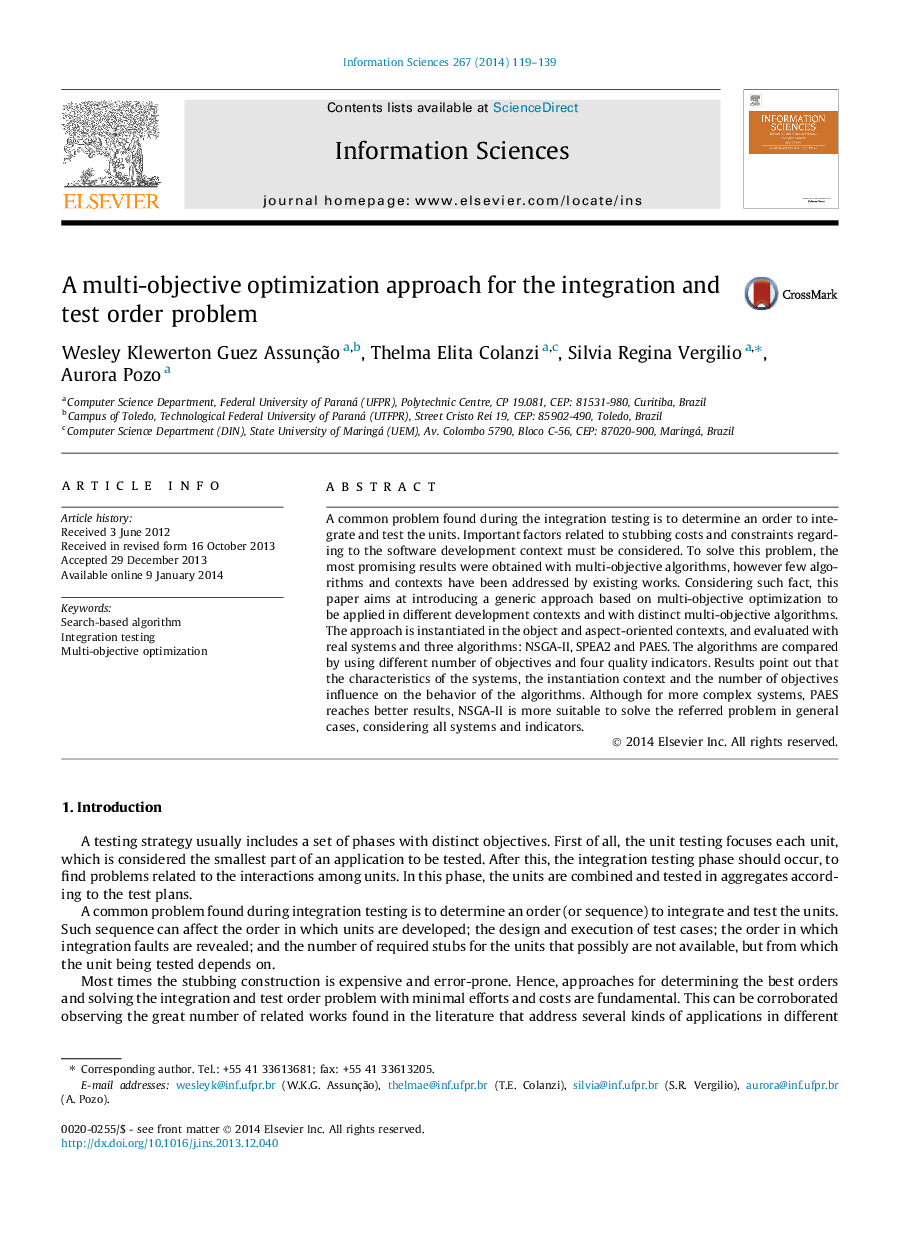| Article ID | Journal | Published Year | Pages | File Type |
|---|---|---|---|---|
| 393601 | Information Sciences | 2014 | 21 Pages |
A common problem found during the integration testing is to determine an order to integrate and test the units. Important factors related to stubbing costs and constraints regarding to the software development context must be considered. To solve this problem, the most promising results were obtained with multi-objective algorithms, however few algorithms and contexts have been addressed by existing works. Considering such fact, this paper aims at introducing a generic approach based on multi-objective optimization to be applied in different development contexts and with distinct multi-objective algorithms. The approach is instantiated in the object and aspect-oriented contexts, and evaluated with real systems and three algorithms: NSGA-II, SPEA2 and PAES. The algorithms are compared by using different number of objectives and four quality indicators. Results point out that the characteristics of the systems, the instantiation context and the number of objectives influence on the behavior of the algorithms. Although for more complex systems, PAES reaches better results, NSGA-II is more suitable to solve the referred problem in general cases, considering all systems and indicators.
